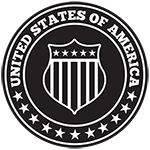In 2025, financial wellness isn’t just a buzzword, it’s a lifeline.
As the cost of living continues to rise and economic uncertainty looms large, more individuals are seeking ways to manage their money, reduce stress, and feel secure about their financial futures. At the same time, employers are stepping up, recognizing that employee financial well-being directly affects productivity, retention, and mental health.
The result? A rapid evolution in financial wellness tools and programs—digital platforms, educational resources, and holistic strategies—that are transforming lives and reshaping workplace culture.
What Is Financial Wellness?
Financial wellness refers to the overall health of an individual’s financial situation. It’s not just about having money in the bank, it’s about feeling confident in your ability to meet daily expenses, handle emergencies, and plan for the future.
Key indicators of financial wellness include:
- The ability to cover monthly bills without stress
- A manageable level of debt
- A growing savings account or emergency fund
- Planning for long-term goals like retirement or homeownership
But here’s the reality: many people aren’t there yet. According to recent studies, a significant portion of working adults live paycheck to paycheck, and financial stress remains a top cause of anxiety, impacting both personal and professional life.
The Rise of Financial Wellness Tools
To address this growing need, financial wellness tools have exploded in popularity. These tools, often in the form of apps, platforms, or integrated workplace benefits, aim to give users a clear picture of their financial health and actionable steps to improve it.
Common features include:
- Budgeting and expense tracking
- Credit monitoring
- Debt repayment plans
- Personalized financial coaching
- Goal-setting and progress tracking
- Educational content tailored to life stages
Example: An employee using a financial wellness platform might receive a notification that their monthly spending on dining out has exceeded their typical average. The tool could then recommend a tailored budget adjustment or offer content on meal prepping to save money.
Financial Wellness Programs at Work
Employers are no longer treating financial stress as a personal issue. Today, companies across industries are implementing financial wellness initiatives to support their teams. These programs are often offered alongside traditional benefits like health insurance and retirement plans, creating a more comprehensive approach to well-being.
Why employers care:
- Financially stressed employees are more likely to miss work or be distracted on the job
- Financial insecurity contributes to high turnover and low engagement
- Providing financial wellness benefits can boost morale and build loyalty
What these programs may include:
- Access to digital financial wellness tools
- One-on-one coaching or counseling
- Workshops and webinars on key topics (e.g., saving, investing, credit)
- Emergency savings support or paycheck advance options
- Student loan repayment assistance
Real Impact: Stories Behind the Stats
The power of these tools and programs isn’t just theoretical, it’s deeply personal.
- A single mother in Toronto reduced her credit card debt by 40% after using a budgeting app offered through her employer’s financial wellness program.
- A young couple in Vancouver used a financial coaching feature to plan for their first home purchase.
- An employee facing unexpected medical bills received immediate guidance and mental health support through a financial wellness platform, avoiding long-term financial fallout.
In many cases, these tools are the first time people receive personalized, judgment-free financial help, and it’s changing the trajectory of their lives.
Looking Ahead
The future of financial wellness is inclusive, tech-driven, and deeply human. As more people seek financial stability in a rapidly changing world, the demand for smart, supportive, and accessible tools will only grow.
For employers, investing in financial wellness programs is no longer a “nice-to-have”, it’s a necessity. And for individuals, embracing the tools available today could be the first step toward a healthier, more secure financial future.






